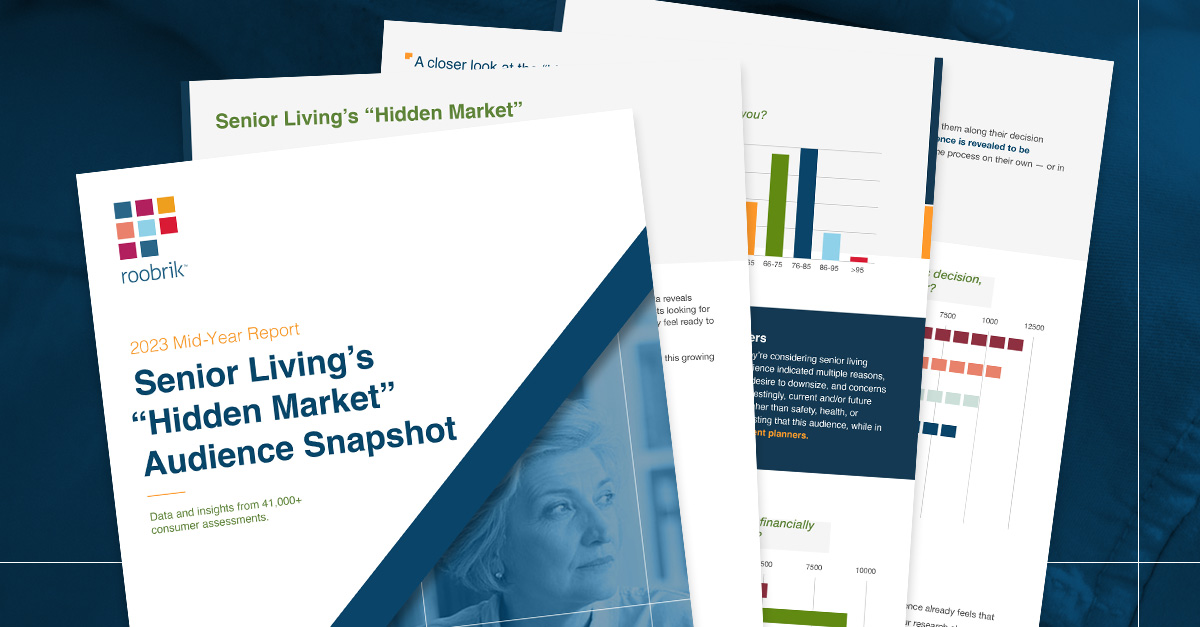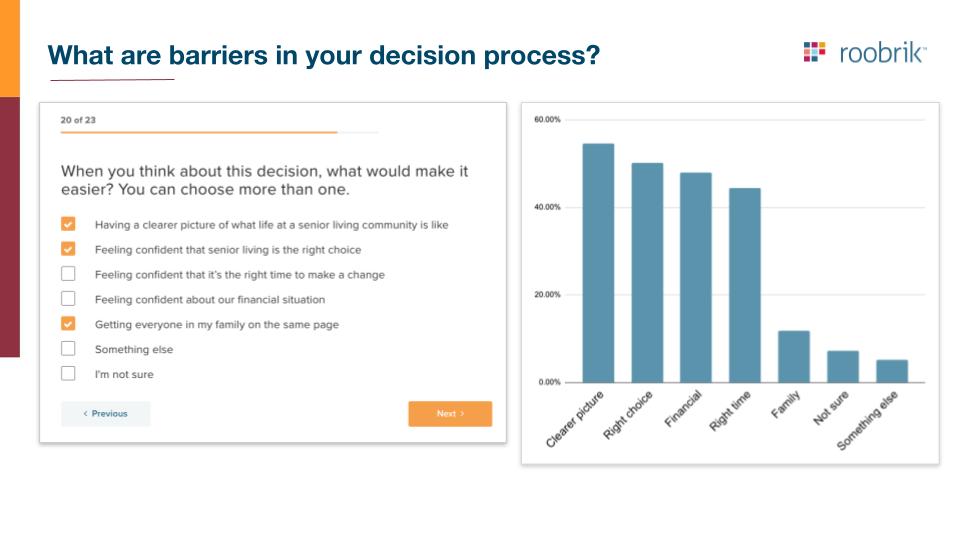Inside Memory Care’s ‘Hidden Audience’ And How Operators Can Reach It
Reprinted with permission from: Memory Care Business, a Senior Housing News publication / WTWH Media: By Austin Montgomery
The burden on caregivers for those with dementia can be an extremely tough and an emotional weight, with the search for answers to what comes next is an important area in which senior living operators could do more to bring in new residents.
Accessing memory care services is important in the care plan for older adults but the transition from home life into a senior living community can be a stressful time for families and future residents. That’s all complicated by the onset of dementia symptoms.
A newly published consumer report is shining light on the needs of older adults living with dementia and their caregivers with the intention of giving memory care operators more tools for reaching them.
The report – published by Roobrik, a company that captures and analyzes data on senior living consumers and prospects – cataloged responses from over 4,000 to identify the characteristics and needs of dementia caregivers, what led consumers to research memory care and what might be holding them back from moving in to a memory care community. As Roobrik has noted in other reports, using this information may help operators reach a potential “hidden audience” for their services.
“It always comes back to this hidden audience of what about everybody else who is still in the throes of one of the hardest decisions they’re ever going to have to make,” said Roobrik Head of Business Development Evan Friedkin. “It’s about how we take that information and then use that in day-to-day marketing to help move more people into senior living communities.”
Memory care’s ‘hidden audience
According to Roobrik’s data, 95% of caregivers noted they were doing research on memory care on behalf of someone else, like a parent or spouse. The completed data revealed that, in many cases, prospects are looking for answers and guidance before they feel comfortable transitioning into a community.
An overwhelming majority of caregivers reported that they provided loved ones with at least a few hours of help and support a week. Noticeable changes in cognitive health, increased care needs and safety concerns are the top three reasons driving a caregiver to connect with a memory care community, according to the data.
“So there’s a vast majority of people who are delaying this decision that are currently getting help, whether it’s a few hours a week or they’re flat-out saying they need the help,” Friedkin said.
Trouble remembering medication regimens, loneliness and depression and reduced appetite or lack of proper nutrition were identified by respondents as the top three issues affecting older adults. Slightly more than a third of caregivers also said they noticed “changes” to the way in which an older adult handles decisions, with over 45% of caregivers reporting trouble with communication with the older adult in question.
But whether or not residents are able to facilitate a move into a community for enhanced memory care services could be more complex due to the high cost of services. A total of 39.4% of respondents said they had “some” financial planning, while 42.6% said they are “maybe” prepared to move while 9.4% of residents said they may not have done financial training to prepare.
Senior living operators must pay attention to how they present themselves to prospects and their family members, or risk losing out on vital sales opportunities.
Operators must ‘support all levels
In the last three years, more providers have embraced digital marketing to attract new residents, knowing that consumers are coming to them more prepared than ever having done their own background research online prior to speaking with a sales person.
With the move to digital has been a move to more transparency around rates and services, and and that is also driven by prospects’ wants and needs.
“They don’t want to be face-to-face for any number of reasons, from guilt to uncertainty to fear, it could be anything that’s going to prevent them from sitting down,” Friedkin said. “They want to be in control of that process.”
That means operators must create “support at all levels,” he added – not just in-person sales appointments but more ways to enable and empower prospects.
“How do we arm the buyer to be able to do this research on their own [and] really move themselves through this funnel, build up that feeling of empowerment, build up the education, build up the kind of motivation to say, ‘I am ready to talk.’” Friedkin said.
What that could look like might be an operator providing interactive resources on a community’s website that doesn’t require a prospect to talk with a sales team.
While it’s common in the senior living industry to hear that the general public might not understand just what the industry provides, Friedkin said it’s on operators to move past the one-to-one communication model of sales people interacting with prospects and move towards a “one-to-many” communication model that offers transparency and more in-depth information to highlight a community.
“I think if brands could do a better job of showing them…I think we’re going to do a better job of helping people, inviting them in and beginning to explore what the solutions actually could be,” Friedkin said. “Now we’re actually having to guide people through this decision making process and we’re not meeting them at the point where they’re trying to make that decision.”
But getting that “delicate balance” between providing resources while still adding the human element to a prospect or prospect’s family’s journey is important, he added.
“We need to make it feel human,” Friedkin said. “There’s always this delicate balance between how we provide those resources without feeling like a robot. That’s tough but it does force a change in all areas.”
Austin Montgomery
Austin Montgomery is a reporter for Senior Housing News as part of WTWH Media. When he isn’t writing, find him at a local disc golf course or at the driving range working on his ball golf swing.




